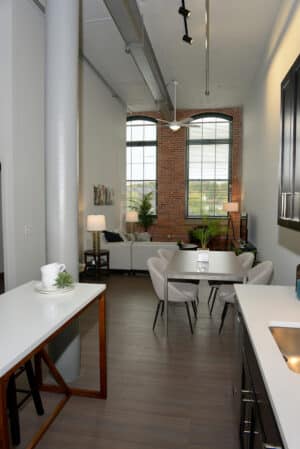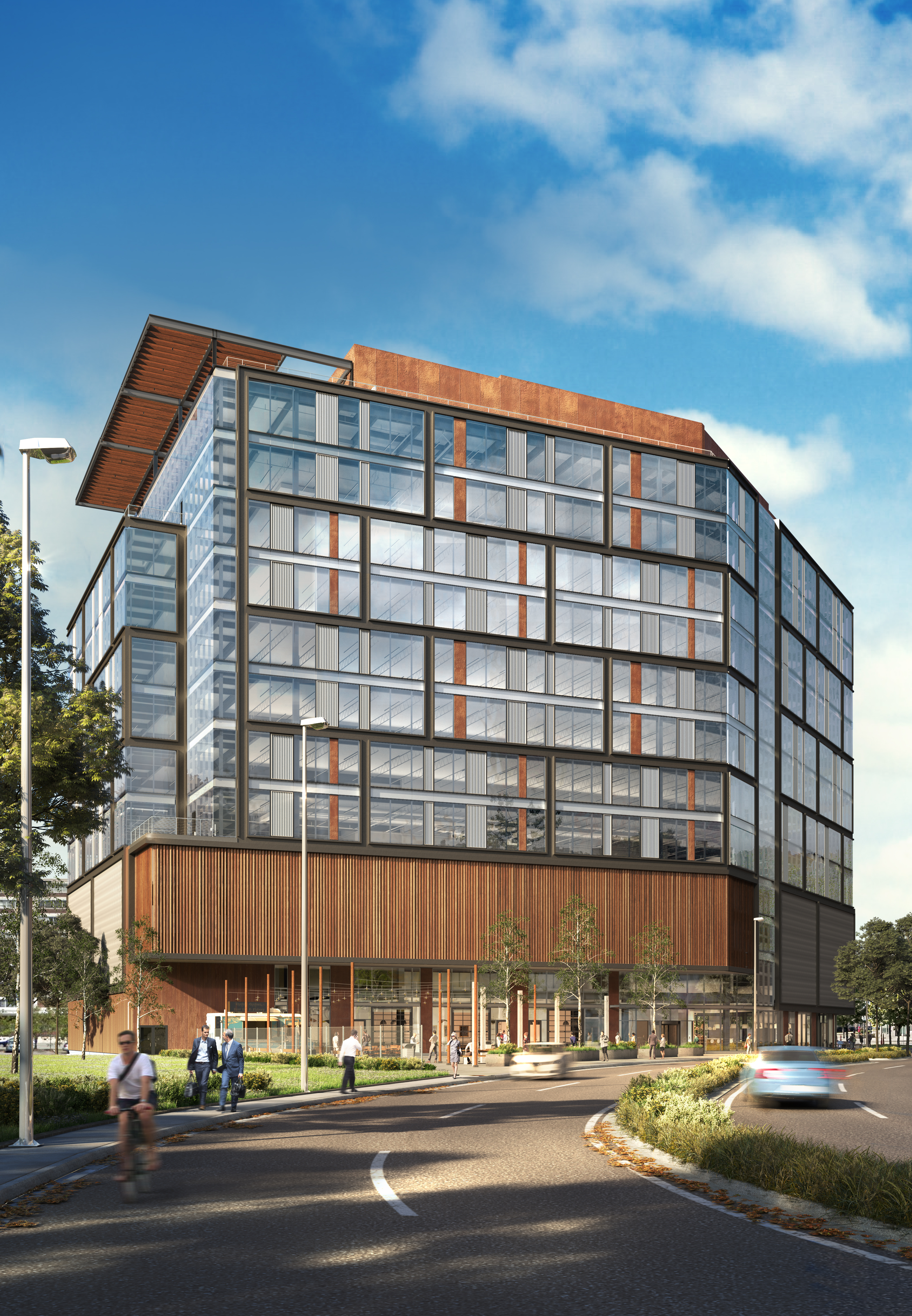
The 102-unit Arlington Point redevelopment of the former Van Brode Mill is Boston-based Trinity Financial’s first development in Lawrence. Image courtesy of Trinity Financial
As cities across Massachusetts continue to face critical housing shortages, historic rehabilitation projects can play a vital role in helping to create much-needed new units for individuals and families. This is particularly true for former industrial cities such as Lawrence, which are home to a plethora of mills ripe for adaptive reuse.
It’s no secret the housing market in Lawrence is hot right now. The city’s population is growing, reaching its highest point since 1950 with more than 80,000 residents in 2018, according to the U.S. Census Bureau. If the trend continues, the city’s population will reach match its historic 1920 high of 94,000 residents sometime in the next decade.
While residents want to call Lawrence home, the city has very little developable land, making adaptive reuse projects even more critical. More than half of Lawrence’s housing was built before 1939, and the city’s neighborhoods are mostly built out – creating a housing shortage and putting upward pressure on rents, two challenges which city officials are working to address.
New Use for Industrial Legacy
One mechanism to meet this challenge is to leverage the historic fabric of the city’s industrial building stock. The structures include classic features that are coveted today as design elements for adaptive reuse projects and are positioned well for re-development.
Arlington Point – a 102-unit, mixed-income development – is a recently completed project that takes advantage of the city’s historic mills and is located in the Arlington Mills District at the former Van Brode Mill. This adaptive reuse project, Trinity Financial’s first development in Lawrence, features apartments at three income tiers to serve residents with a broad range of incomes.
Constructed in 1919 by the Arlington Mills Co., the facility originally produced yarn for wool and flannel. By the 1950s, the Arlington Mills Co. closed, and the property was acquired by the Clinton-based Van Brode Co. Van Brode shifted production to food products, such as packaged breakfast cereals and rations for the military.
During construction, the project team worked to preserve and restore the former mill. The result is a project that retains the best features of the original Van Brode Mill structure – including high ceilings, large windows, ample natural light, expansive historic corridors and original wood and brick. At the same time, the community features modern amenities, such as a smart-wired fitness center, lounge, kids’ play center, outdoor tot lot and an array of rooftop solar panels.
Trinity Financial has a history of transforming older buildings into quality multifamily housing and we’ve completed at seven historic rehabilitation projects to date. While these projects can be tremendously rewarding for developers and the communities they serve, it’s important to understand the unique challenges they pose.
Parking, Remediation Are Challenges
The biggest issues usually center on financing and remediating the site – both of which were factors at Arlington Point. Fortunately, state and federal historic tax credit programs are designed to make the process of updating and breathing new life into historic structures more economically feasible and viable. At the federal level, the National Park Service has stringent guidelines that must be followed to preserve and reuse these historic structures, so that their original features are retained.
Many historic buildings are also located on brownfield sites due to their past uses. Remediating brownfield sites can be a lengthy and expensive process. It’s important to research and understand how a site was utilized to determine the activity that contributed to the contamination and the efforts that will be needed to remediate it.
Another challenge is that when many of these mills were originally built most people did not have cars, so parking was not a factor in the original site design. Fortunately, many cities, including Lawrence, are establishing smart growth overlay districts to create greater flexibility and lower parking requirements.
The popularity of adaptive reuse projects is clear as developers seek out these historic structures. Trinity Financial is assembling financing and plans for our next such project in Lawrence – an additional 84 units located next to Arlington Point. Leveraging this history is vital to meeting local housing demands.
Dan Drazen is a vice president of development at Trinity Financial.




 |
| 
